How to Backup OneDrive Effortlessly
Cloud storage services like OneDrive have become indispensable tools for individuals and businesses.
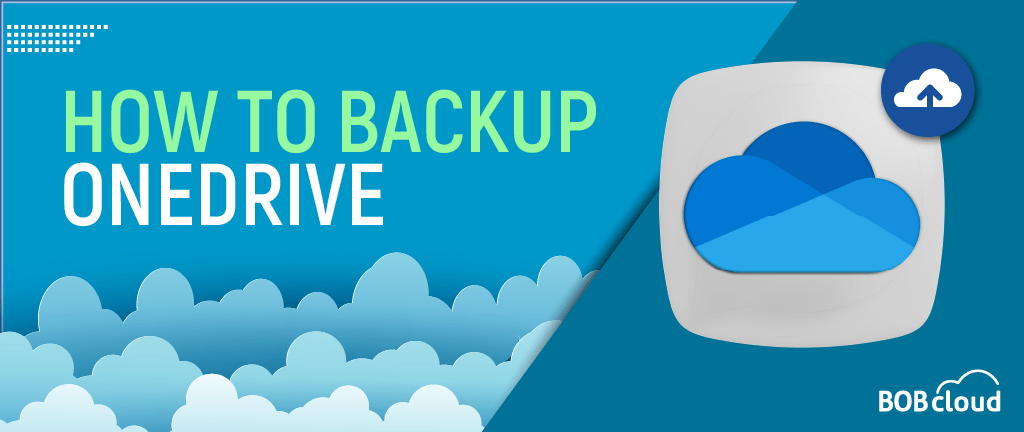
OneDrive by Microsoft is a flexible file storage and access solution across different devices. Many users perceive OneDrive as just a cloud storage service. It is a data preservation backup application that protects your critical information, prevents accidental loss and ensures it’s available anytime from anywhere.
OneDrive usually comes pre-installed with Windows, but you must manually download for non-Microsoft OS such as Apple and Android. You can download a copy of OneDrive files to your device or sync using a OneDrive client to any of your OneDrive-linked devices.
This article will explore two efficient methods for effortlessly backing up OneDrive. Whether you have a free Microsoft account with limited storage or a paid OneDrive account through Office 365, these backup approaches will ensure your peace of mind.
Why Do I Need to Backup OneDrive?
OneDrive is very convenient regarding data availability, but there should be other options as you put yourself at risk. Here’s why backing up your OneDrive data is crucial:
- Single Point of Failure: OneDrive exists in the cloud, making it susceptible to service interruptions, outages, or potential account suspension. Without a local backup, all your data becomes inaccessible during such downtime.
- Accidental Deletion: It’s easy to delete or overwrite files accidentally, even in OneDrive. Backups provide a safety net, allowing you to restore lost or corrupted data from a separate location.
- Ransomware Attacks: Malware and ransomware can encrypt your OneDrive data, demanding ransom for its recovery. A backup allows you to revert to a clean, pre-infected state without extortion.
- Version Control Limitations: OneDrive often stores multiple versions of files for a limited time. Backups enable you to preserve and access older versions indefinitely, offering a safety net from accidental edits or unwanted changes.
- Data Retention Policies: While OneDrive offers generous storage space, data retention policies might apply. Inactive files could be deleted after a certain period unless regularly accessed. Backups ensure long-term data preservation, regardless of OneDrive’s policies.
- Account Closure or Migration: Scenarios like account closure or migration to another cloud service can lead to data loss if solely reliant on OneDrive. Backups offer a safeguard, allowing you to quickly transfer your data to another platform or local storage.
Benefits of Backing Up Your OneDrive Data
- Data protection: You can restore your files in case of any data loss or corruption event without relying on Microsoft’s limited retention policies or support.
- Data recovery: You can restore your files from any location in time, not only the latest one and choose particular files or folders to retrieve.
- Data compliance: The ability to use the information is helpful if you work with confidential or sensitive data, as it also helps comply with regulatory and legal requirements to retain and preserve some types of records.
- Data control: You can handle your backup configurations and guidelines, for instance, how often, the storage location of the backups, and encryption options, simplifying their retention.
- Data security: You can avoid unauthorised uses or modifications by storing your backup information on another site that is separate from the original data because it will be encrypted.
How to Backup OneDrive in Simple Ways
You can Back up OneDrive files in multiple ways. You can purchase any third-party software, link your account and get automatically protected by that software, but here we will show you the most effective offline methods that will cost you nothing. To Backup your OneDrive files, please follow these two most effective methods.
Method #1: Download OneDrive Files To Your Device
Consider saving OneDrive files to your local computer if you only store them online. You can access the downloaded OneDrive files locally without an internet connection. Follow the below steps to download OneDrive files to your device.
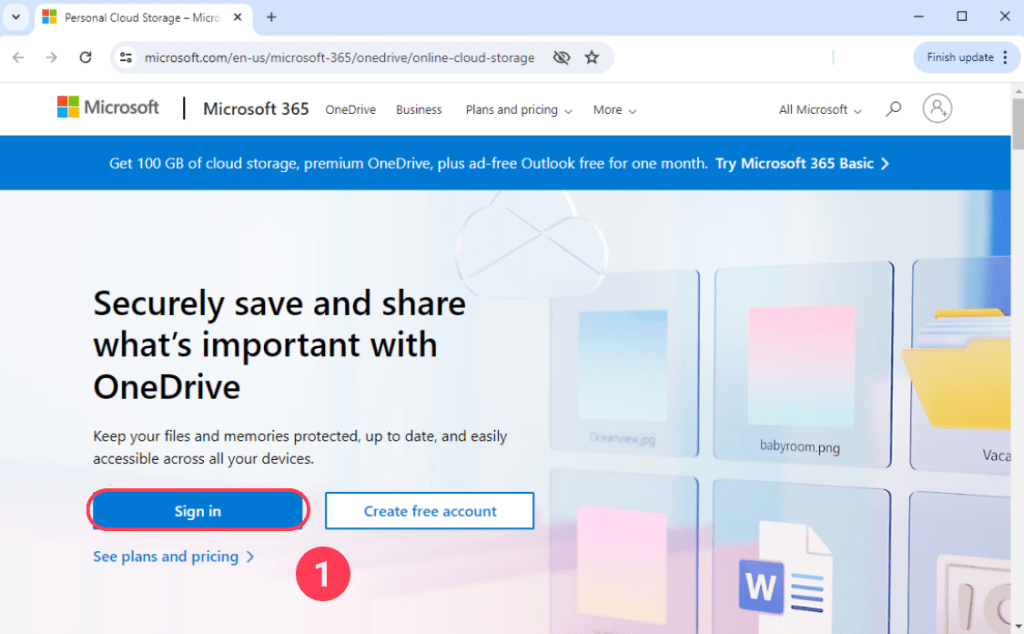
1. On your browser, go to the OneDrive website
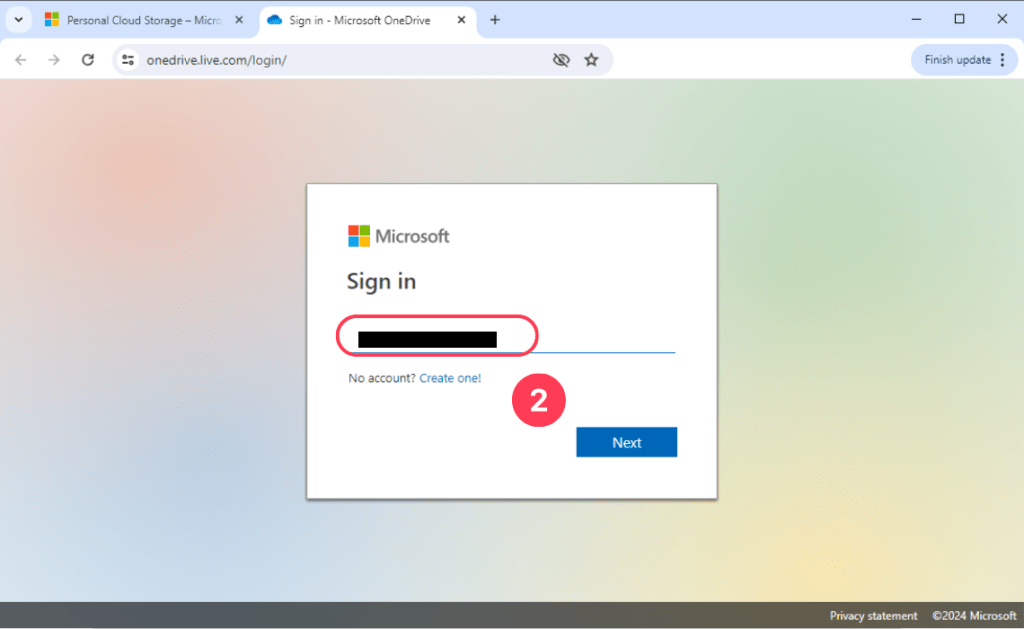
2. Type your OneDrive Credential and Click on Next
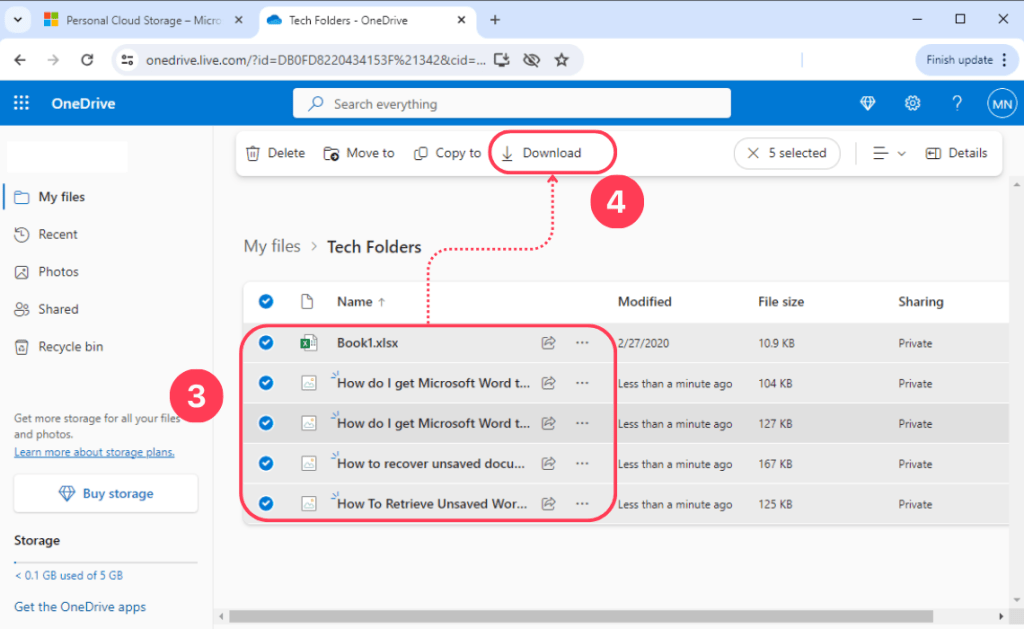
3. Select the files and folders;
4. Click the download button that appears on the menu.
Keep the downloaded files in a secure location for future use.
Method #2: Sync OneDrive Files to External Hard Drive
In this approach, you would keep all your OneDrive files on an external hard drive on a preventive basis, particularly if you want to download OneDrive to external hard drive or backup OneDrive to external drive. You were saving it like a backup. Syncing with an external hard drive will be an excellent option for fast data transfer.
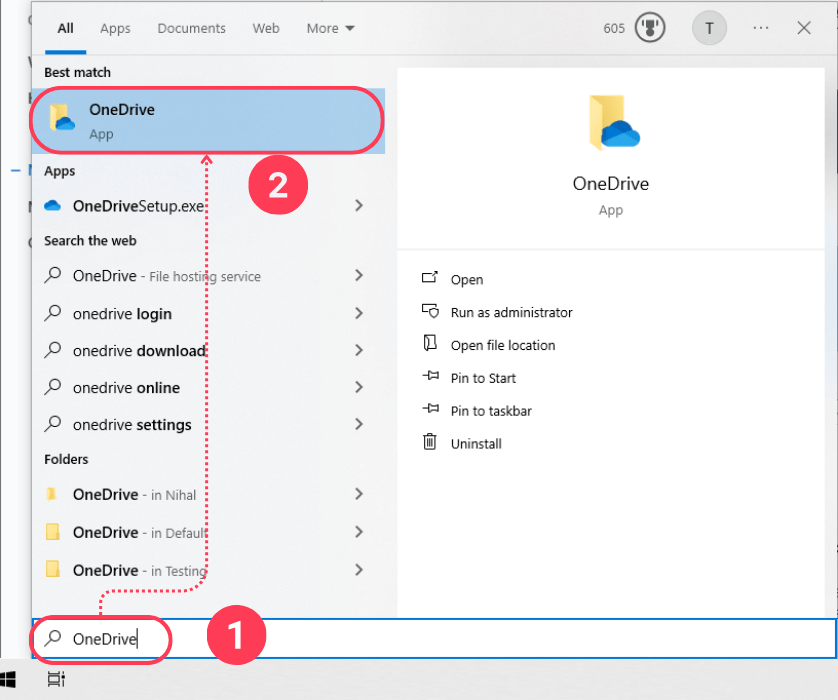
1. On your Windows device type OneDrive
2. Select the best match
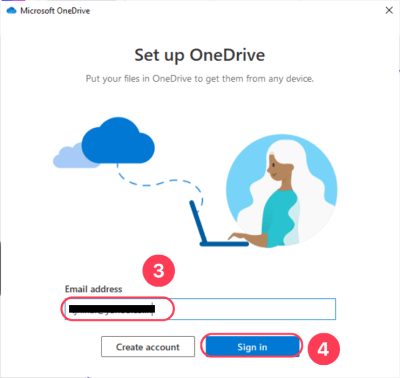
3. Type your OneDrive email address
4. Click on the Sign in button
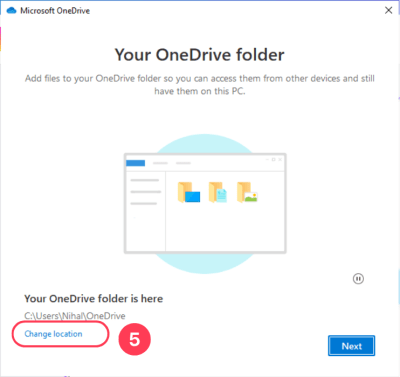
5. Click on the Change Location button
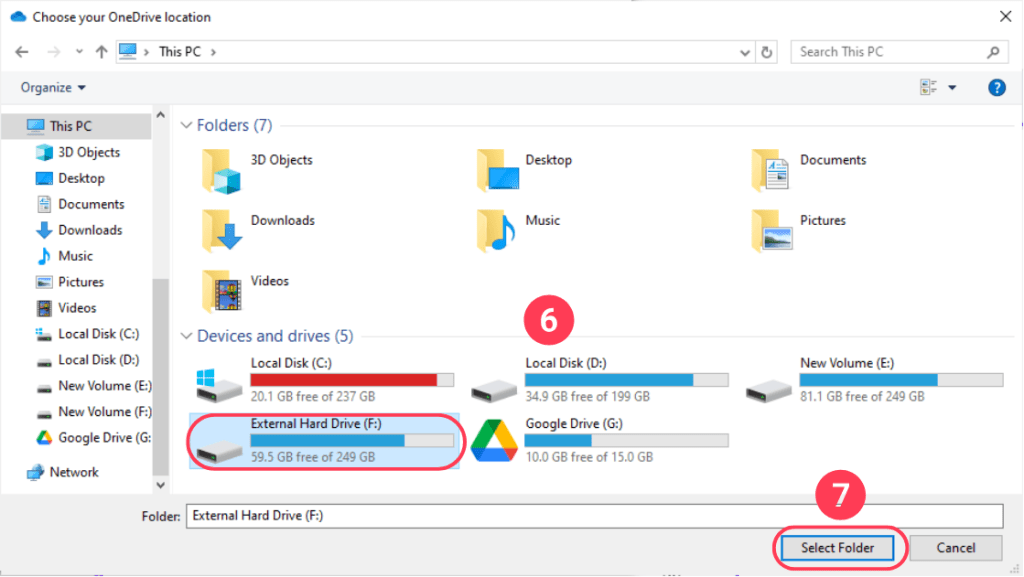
6. Select the External Hard Drive available on yoru Device
7. Click on the Select Folder to confirm.
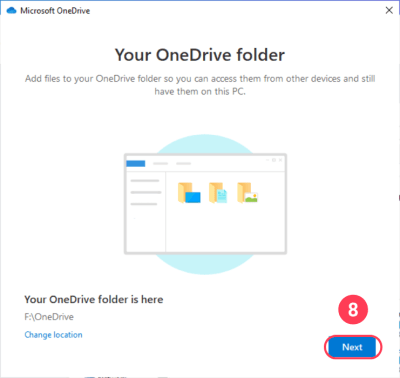
8. Click on the Next button to proceed further.
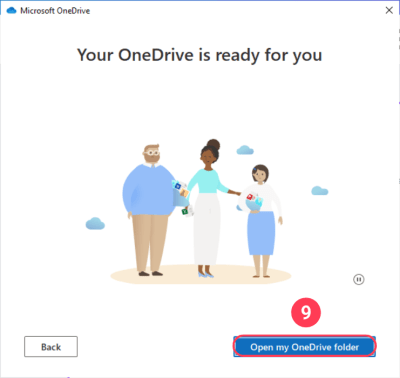
9. Click on the Open my OneDrive Folder
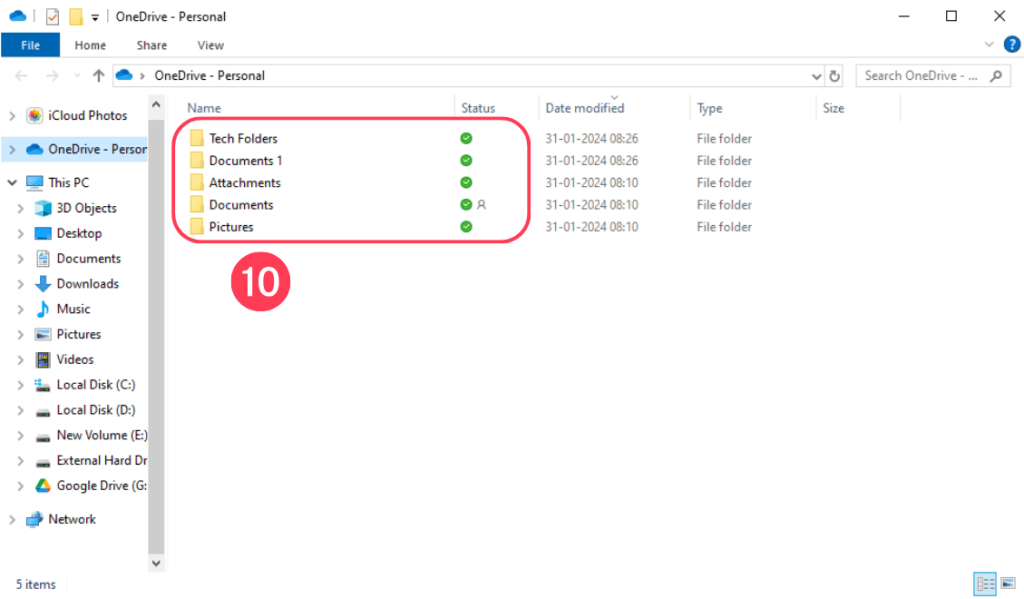
10. Here you can see, a copy of your OneDrive files has been successfully synced to your External Hard Drive.
You have successfully created a backup version of your OneDrive file on your external hard drive.
Method #3: How to Backup OneDrive to using Cloud to Cloud Backup
Though downloading the files of OneDrive to your device or syncing them with an external hard drive are efficient offline ways, integrating a cloud backup solution further protects all critical data. In the case of cloud backup services (such as Backblaze, Carbonite, or Acronis), these services will automatically back up your OneDrive files to authorised and secured repositories in another location.
To implement cloud backup for your OneDrive:
- Choose a Cloud Backup Service: Research and select a reputable cloud backup service that suits your needs. Ensure the service supports OneDrive integration.
- Sign Up and Install the Software: Create an account with the chosen cloud backup provider and install their software on your device. Follow the setup instructions provided by the service.
- Link Your OneDrive Account: Within the backup service’s settings, locate the option to add cloud storage. Link your OneDrive account to the backup service by providing the necessary credentials.
- Configure Backup Settings: Customise the backup settings according to your preferences. You may specify which OneDrive folders or files to include, set automatic backup schedules, and establish retention policies.
- Initiate the Backup: Start the backup process. All your OneDrive data is securely transferred into the cloud backup service’s servers to protect the files from accidental removal, loss during hardware failure or any other unforeseen disasters.
- Monitor and Manage Backups: Periodically review the health of your cloud backups and confirm they reflect your current data state. Many backup services feature easy-to-use or user-friendly dashboards for monitoring; likewise, some offer notifications for convenience.
Conclusion
There is a need to protect your files in OneDrive through scheduled backups. It is essential to have a dependable backup approach that can shield you from accidental information loss or random ware. Through these two efficient mechanisms discussed above, you can take preemptive measures to guarantee the safety and accessibility of your OneDrive data in years ahead.
